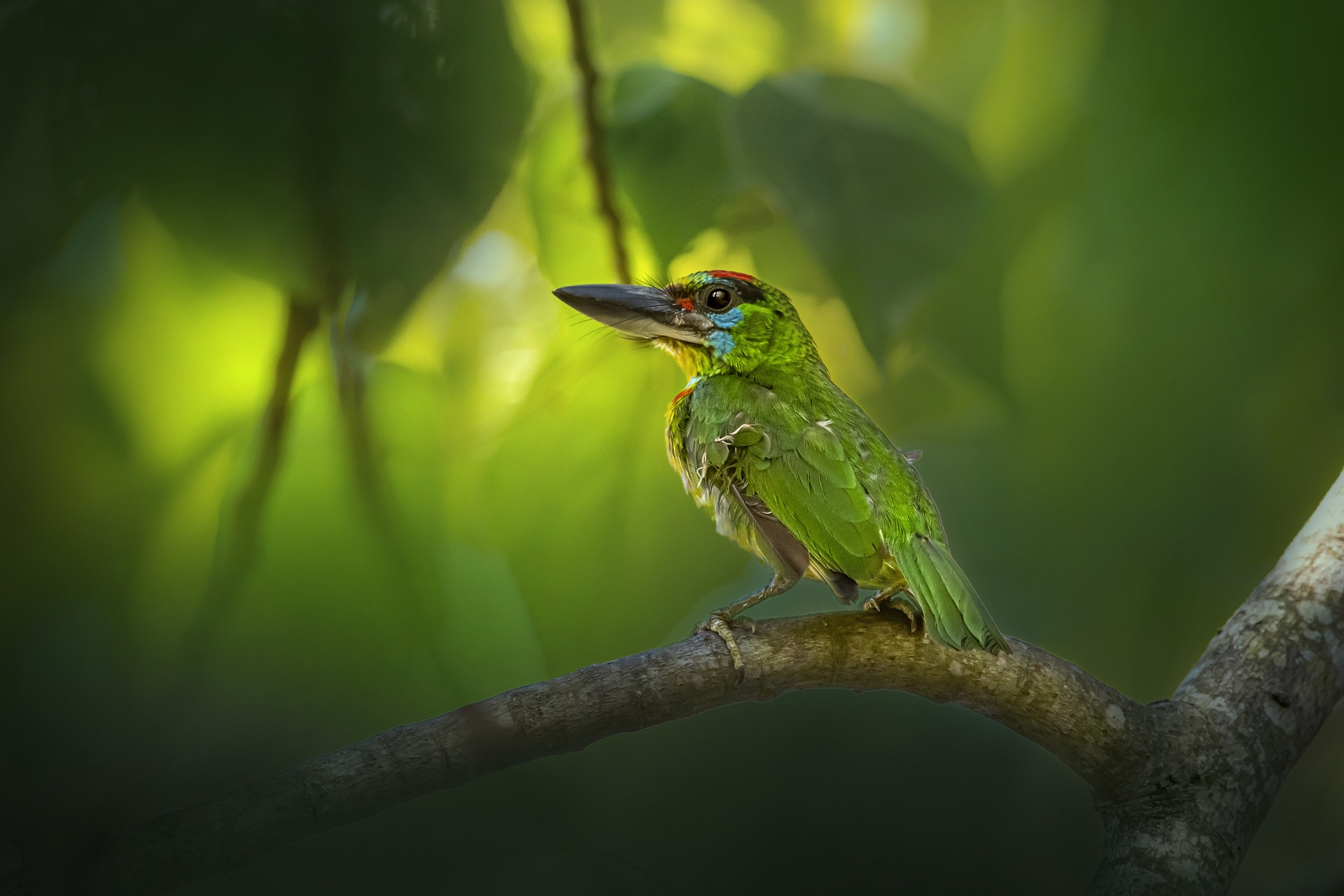The Red-throated Barbet (Psilopogon mystacophanos), also known as the Red-fronted Barbet, is a colorful bird species belonging to the barbet family, Megalaimidae. Here’s some information about this beautiful bird:
- Appearance: The Red-throated Barbet has a distinctive appearance with bright plumage. It has a red forehead and throat, which contrast with its black face mask and white cheeks. The upperparts are olive-green, and the underparts are yellowish-green. It has a stout, slightly curved bill, typical of barbets.
- Habitat: Red-throated Barbets are found in a variety of wooded habitats, including tropical and subtropical forests, woodlands, and forest edges. They prefer habitats with abundant fruiting trees and dense vegetation where they can forage and nest.
- Distribution: This species is native to Southeast Asia and is found in countries such as Thailand, Malaysia, Indonesia, and the Philippines. It inhabits both lowland and montane forests within its range.
- Behavior: Red-throated Barbets are often heard before they are seen, as they have loud and distinctive calls that they use to communicate with each other. They are primarily fruit-eating birds but may also feed on insects and other small invertebrates. They are generally solitary or found in pairs.
- Nesting: Red-throated Barbets excavate nest holes in tree trunks or branches, where they lay their eggs and raise their young. The female typically lays a clutch of 2-4 eggs, which are incubated by both parents. Both parents also participate in feeding and caring for the chicks after hatching.
- Conservation: While the Red-throated Barbet is not considered globally threatened, it may face localized threats from habitat loss and fragmentation due to deforestation and human development. Conservation efforts aimed at preserving and restoring forest habitats are important for the long-term survival of this species and other forest-dwelling birds.
Overall, the Red-throated Barbet is a striking bird species appreciated for its vibrant plumage, distinctive calls, and important ecological role as a seed disperser in forest ecosystems.
Visited 381 times, 9 visit(s) today
Views: 408
Subscribe to the newsletter:
